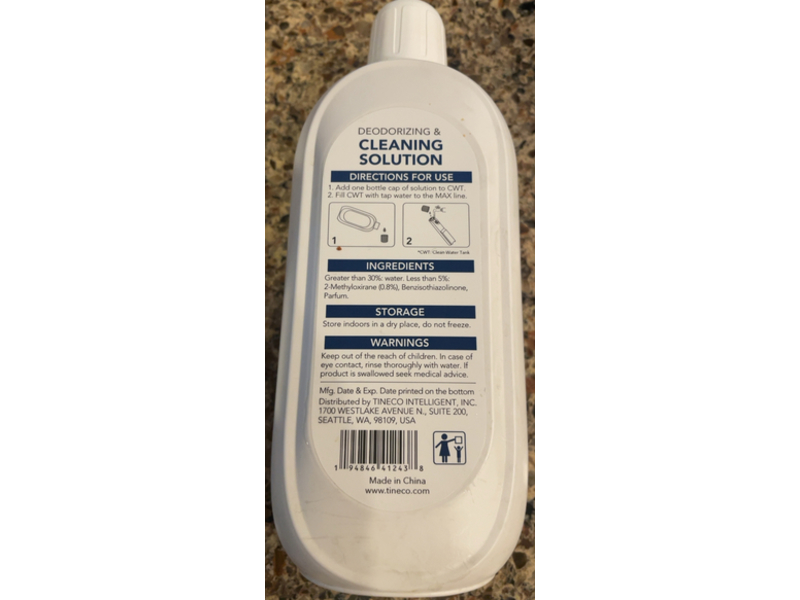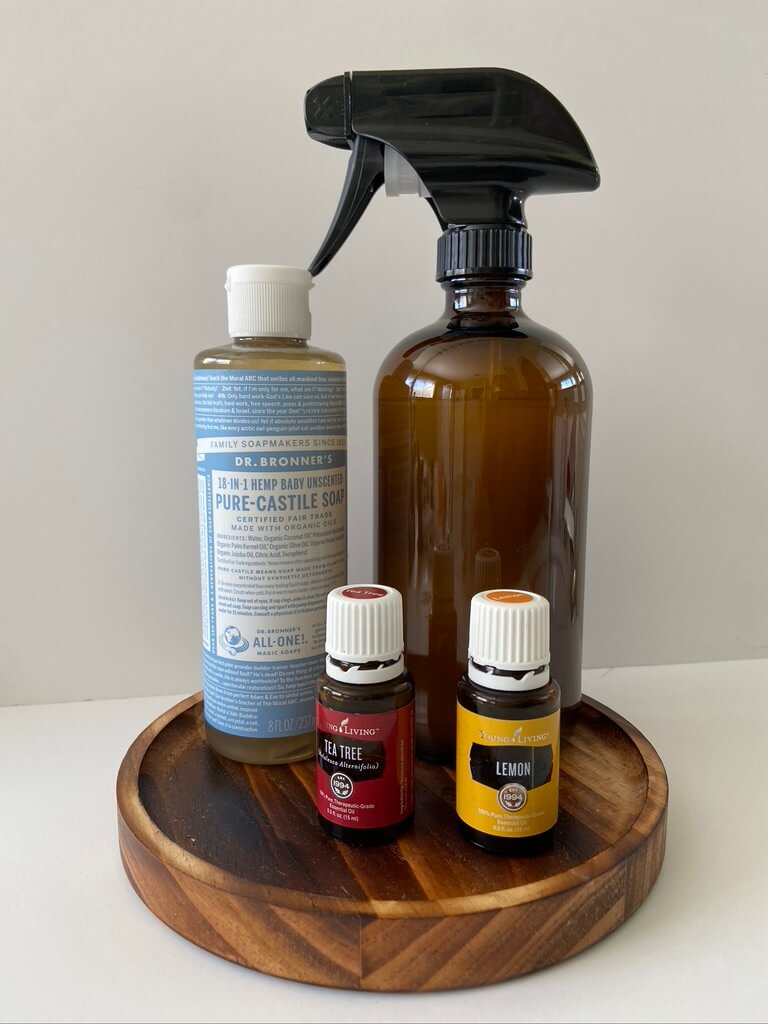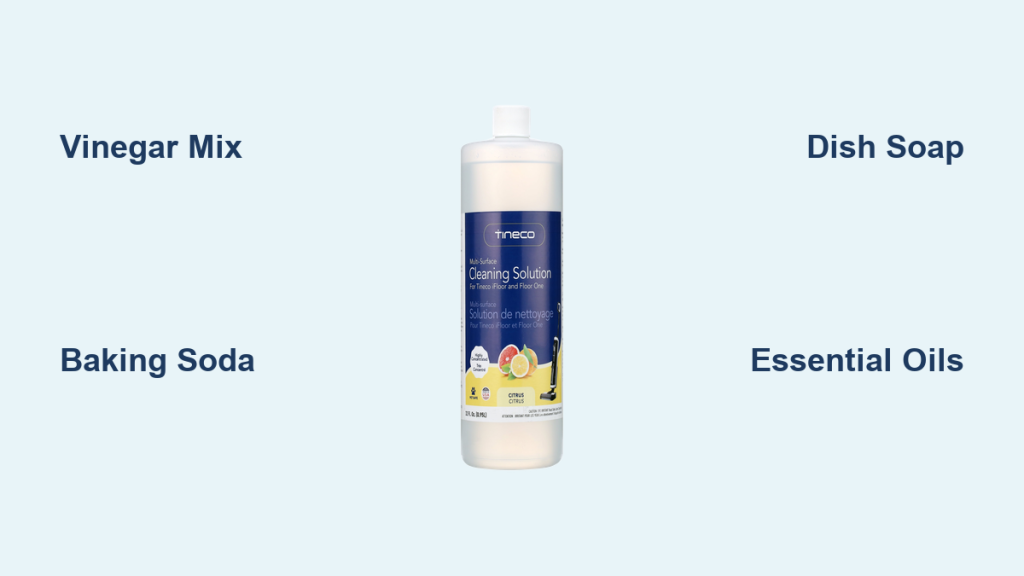If you’ve got a Tineco floor cleaner like the iFloor or S3 series and you’re tired of buying expensive proprietary cleaning solutions, you’re not alone. Many users face the hassle of running out of official Tineco cleaning solution right when they need it most, leading to interrupted cleaning sessions and extra trips to the store. The good news? You can whip up an effective Tineco cleaning solution at home using simple household ingredients, saving money while keeping your floors sparkling clean without risking damage to your machine.
In this comprehensive guide, we’ll go beyond a basic recipe to explore why homemade options work so well for Tineco devices, provide multiple easy-to-follow recipes tailored to different floor types, and cover safety tips, usage instructions, and troubleshooting. By the end, you’ll have the confidence to create a custom Tineco cleaning solution that performs just as well as the brand’s, extending the life of your vacuum and ensuring streak-free results every time.
Why Make Your Own Tineco Cleaning Solution?
Tineco floor cleaners are designed for hard floors like tile, hardwood, and laminate, but their official solutions can be pricey—often $20 or more per bottle—and not always readily available. Homemade alternatives allow you to customize the strength for tough stains or gentle cleaning, reduce waste from plastic packaging, and avoid harsh chemicals that might irritate sensitive skin or pets. According to Tineco’s user manual, their machines are compatible with mild, pH-neutral cleaners, so DIY recipes using vinegar, baking soda, or dish soap fit perfectly, as long as you avoid anything abrasive or overly acidic that could clog the system.
Making your own also promotes sustainability; you’ll use eco-friendly ingredients that biodegrade quickly. Plus, it’s empowering—once you know the basics, you can experiment based on your home’s needs, like adding essential oils for a fresh scent. Just remember, while these recipes are safe and effective, they’re not a substitute for Tineco’s warranty-approved solutions if you’re concerned about voiding coverage.
Materials and Tools Needed

Creating a Tineco cleaning solution requires minimal gear, most of which you likely have in your kitchen. Focus on high-quality, non-toxic ingredients to ensure compatibility with your Tineco’s self-cleaning modes and sensors.
| Item | Quantity | Specifications |
|---|---|---|
| White Vinegar | 1 cup (for base recipes) | Distilled, 5% acidity; avoids residue on floors |
| Distilled Water | 1 gallon | Softens the solution; prevents mineral buildup in Tineco tanks |
| Mild Dish Soap | 1-2 tablespoons | Fragrance-free like Dawn or Ecover; cuts grease without suds |
| Baking Soda | 2-4 tablespoons (optional) | Food-grade; for deodorizing and mild abrasion |
| Essential Oils (e.g., Lemon or Tea Tree) | 10-20 drops | Optional for scent; use pure, not synthetic to avoid residue |
| Spray Bottle or Measuring Cup | 1 | For mixing; glass or BPA-free plastic, 32 oz capacity |
| Funnel | 1 | Helps pour into Tineco’s clean water tank without spills |
| pH Test Strips | 1 pack | Optional; ensures solution is neutral (pH 6-8) for Tineco safety |
These items cost under $10 total if you need to buy them, compared to $20+ for a single bottle of official solution. Always use distilled water to mimic Tineco’s formula and prevent limescale in the pump.
Preparation Steps and Safety Considerations
Before diving into recipes, prep your workspace to avoid mishaps. Start by cleaning your Tineco’s tanks thoroughly—empty the dirty water tank, rinse with fresh water, and run a self-clean cycle if available. This ensures no residue from previous uses contaminates your new solution.
Safety first: Tineco recommends avoiding bleach, ammonia, or alcohol-based cleaners, as they can damage seals and sensors. Wear gloves if you have sensitive skin, and test any new solution on a small, inconspicuous floor area to check for discoloration. Work in a well-ventilated area, especially with essential oils, which can be potent. If your Tineco model (like the Floor One S5) has a smart app, note that it may detect unusual pH levels—stick to balanced recipes to avoid error codes.
For storage, mix only what you’ll use in 1-2 weeks and keep it in a cool, dark place. Label your container clearly to prevent confusion with other household cleaners. Warning: Never mix vinegar with bleach or hydrogen peroxide, as it creates toxic fumes.
Step-by-Step Process for Making Tineco Cleaning Solution
We’ll cover three recipes, from simplest to more advanced, each taking 5-10 minutes. These are optimized for Tineco’s 0.8-1 liter clean water tanks. Scale up for larger batches.
Recipe 1: Basic Vinegar-Water Solution (For Everyday Cleaning)
This gentle, all-purpose Tineco cleaning solution is ideal for sealed hardwood, tile, or vinyl floors. It’s budget-friendly and evaporates without streaks.
- Gather ingredients: 1 cup white vinegar, 1 gallon distilled water, and 1 tablespoon mild dish soap.
- Measure and mix: In a large bowl or directly in your spray bottle, combine the vinegar and dish soap. Slowly add the distilled water while stirring gently to avoid bubbles.
- Enhance if desired: Add 10 drops of lemon essential oil for a fresh scent and natural antibacterial boost.
- Test pH: Dip a strip—if it’s between 4-6, it’s ready (vinegar lowers pH slightly, but Tineco tolerates it).
- Pour into Tineco: Use the funnel to fill the clean water tank. Fill to the max line, leaving room for agitation.
This recipe yields about 1 gallon, enough for 4-5 full cleanings. It tackles light dirt and dust effectively, with the vinegar dissolving mineral deposits.
Recipe 2: Baking Soda-Infused Solution (For Tough Stains and Odors)

Upgrade to this for pet messes, kitchen grease, or high-traffic areas. Baking soda adds mild scrubbing power without scratching floors.
- Prep the base: Start with 1 gallon distilled water and 1/2 cup white vinegar.
- Dissolve baking soda: In a separate cup, mix 2 tablespoons baking soda with 1/2 cup warm distilled water until fully dissolved (about 1 minute). This prevents clumping.
- Combine everything: Add the baking soda mixture to the base, then stir in 1-2 tablespoons dish soap. Whisk for 30 seconds.
- Optional scent: Incorporate 15 drops tea tree oil for antimicrobial properties—great for bathrooms.
- Strain and store: Pour through a fine mesh strainer into your container to remove any undissolved particles, then fill your Tineco tank.
Expect about 10 minutes total. Use this weekly for deeper cleans; it neutralizes odors better than plain vinegar. Important: Rinse your Tineco’s brush roll after use to avoid baking soda residue buildup.
Recipe 3: Advanced Multi-Surface Solution (For Mixed Floors with Essential Boost)

Perfect for homes with varied surfaces like laminate and stone. This balances acidity with natural oils for shine and protection.
- Base preparation: Mix 3/4 gallon distilled water with 1/4 cup white vinegar and 2 tablespoons dish soap in a 1-gallon jug.
- Add neutralizing agent: Stir in 1 tablespoon baking soda slowly to fizz (this creates a mild reaction that balances pH).
- Incorporate oils: Add 20 drops of a blend—10 lemon for grease-cutting and 10 lavender for calming scent. Shake well.
- Fine-tune: Test pH (aim for 6-7); if too acidic, add a pinch more baking soda.
- Bottle and integrate: Funnel into a labeled bottle. For Tineco use, dilute further if cleaning delicate unsealed wood (1:1 with water).
This takes 8-10 minutes and stores for up to two weeks. It’s versatile for Tineco models with edge-cleaning features, providing a protective layer that repels dust.
How to Use Your Homemade Tineco Cleaning Solution
Once mixed, integrate it seamlessly into your routine. Fill the clean water tank as per your model’s instructions (e.g., up to 800ml for iFloor 3). Run your Tineco on the appropriate mode—auto for smart detection or manual for spot cleaning. For best results, vacuum dry debris first, then mop in sections, overlapping strokes slightly.
After cleaning, empty the dirty tank immediately and run a rinse cycle with plain distilled water to flush the system. This prevents clogs in the tubes. On average, one tank cleans 1,000-1,500 sq ft, depending on soil level. Tip: If your floors feel sticky post-clean, dilute the next batch more.
Post-Completion Testing and Troubleshooting
Test your solution’s effectiveness by cleaning a 10×10 ft test area. Look for streak-free shine, no residue when dry (about 5-10 minutes), and that your Tineco’s flow indicator works normally. If the machine beeps or shows a “check solution” error, dilute further or switch recipes—overly soapy mixes can trigger sensors.
Common issues:
– Clogging: If brushes don’t spin, disassemble and rinse with warm water. Caused by undissolved ingredients.
– Streaks on floors: Too much vinegar; reduce to 1/2 cup next time.
– Weak cleaning: For heavy grime, pre-treat spots with undiluted vinegar, then mop.
– Machine odor: Run a vinegar-only rinse cycle monthly.
If problems persist after two tries, revert to official Tineco solution for diagnosis.
Pro Tips for Optimal Results
- Customize for seasons: In summer, add more vinegar for humidity-fighting; winter batches can include more oils to combat dry air.
- Eco-boost: Use castile soap instead of dish soap for a plant-based alternative—it’s gentler on Tineco’s rubber seals.
- Avoid common mistakes: Don’t overuse essential oils (max 20 drops per gallon) to prevent slippery floors or sensor interference. Always shake before use.
- Storage hack: Freeze portions in ice cube trays for single-use batches—thaw as needed to keep fresh.
- Performance optimization: Pair with Tineco’s self-propulsion feature by ensuring the solution isn’t too thick; it should flow freely.
- Long-term maintenance: Every three months, deep-clean your Tineco’s tank with a 1:10 vinegar-water mix to complement your homemade solution.
These tips can cut your cleaning time by 20% and extend brush life by months.
When to Seek Professional Help
While DIY Tineco cleaning solution is straightforward, call in pros if your machine leaks after use (possible seal damage) or if homemade mixes cause persistent errors—indicating internal issues. Look for certified Tineco technicians via their website or authorized repair shops; check reviews for quick turnaround (under 48 hours). Costs range from $50-150 for diagnostics, often covered under 2-year warranty if you stick to approved cleaners. If experimenting voids your warranty, opt for official solutions to stay safe.
FAQ
Q: Is homemade Tineco cleaning solution safe for all models?
A: Yes, for most like the Floor One S7 or A10, as long as it’s pH-neutral and suds-free. Avoid on carpet attachments—stick to hard floors. Tineco’s guidelines confirm mild vinegar mixes are fine, but test small batches first.
Q: Can I use tap water instead of distilled?
A: Not recommended; tap water’s minerals can clog the heater or sensors over time. Distilled ensures longevity, especially in hard-water areas.
Q: How long does homemade solution last?
A: Up to two weeks refrigerated, or one week at room temp. Discard if it smells off or separates—freshness is key for Tineco’s iLoop sensors.
Q: What if my floors are unsealed wood?
A: Use a low-vinegar recipe (1/4 cup max per gallon) or skip acids altogether, opting for soap-water with oils. Test to avoid warping.
Q: Does this save money compared to official Tineco solution?
A: Absolutely—one gallon homemade costs ~$1-2 vs. $20 for Tineco’s. You’ll recoup costs after two uses.
Q: Can I add bleach for disinfection?
A: No—bleach corrodes Tineco parts and creates fumes. Use tea tree oil or hydrogen peroxide (diluted 1:10) as safe alternatives.
Q: What essential oils work best?
A: Lemon for shine, eucalyptus for allergies, or peppermint for freshness. Always dilute and ensure they’re 100% pure to avoid residue.
Alternative Solutions
If DIY doesn’t appeal, consider these options when official Tineco solution is unavailable.
| Solution | Pros | Cons | Best For |
|---|---|---|---|
| Bona Hardwood Floor Cleaner | pH-neutral, streak-free; Tineco-approved | More expensive (~$15/bottle); less customizable | Wood/laminate homes |
| Method Squirt + Mop | Eco-friendly, plant-based; easy spray format | Sudsy if overused; not as strong on grease | Quick, green cleaning |
| Mr. Clean Multi-Surface | Budget-friendly; cuts tough stains | Strong scent; may need dilution for Tineco | High-traffic kitchens |
| Plain Distilled Water + Soap | Ultra-simple, no additives | Lacks disinfecting power; basic results | Light daily maintenance |
Compare pros/cons: Homemade wins on cost and control, but store-bought ensures zero risk to warranty.
Enjoy Spotless Floors with Your Homemade Tineco Cleaning Solution
You’ve now mastered creating a reliable Tineco cleaning solution with our recipes, safety tips, and usage guide:
– Basic vinegar mix for everyday ease
– Baking soda version for stains
– Advanced oil blend for multi-surfaces
– Pro tips to avoid pitfalls and optimize
Following this blueprint not only saves you money but also keeps your Tineco running efficiently for years. Dive in today—mix a batch and tackle those floors with confidence.
Have you tried making your own Tineco cleaning solution? Share your favorite recipe tweaks in the comments below to inspire other readers!

